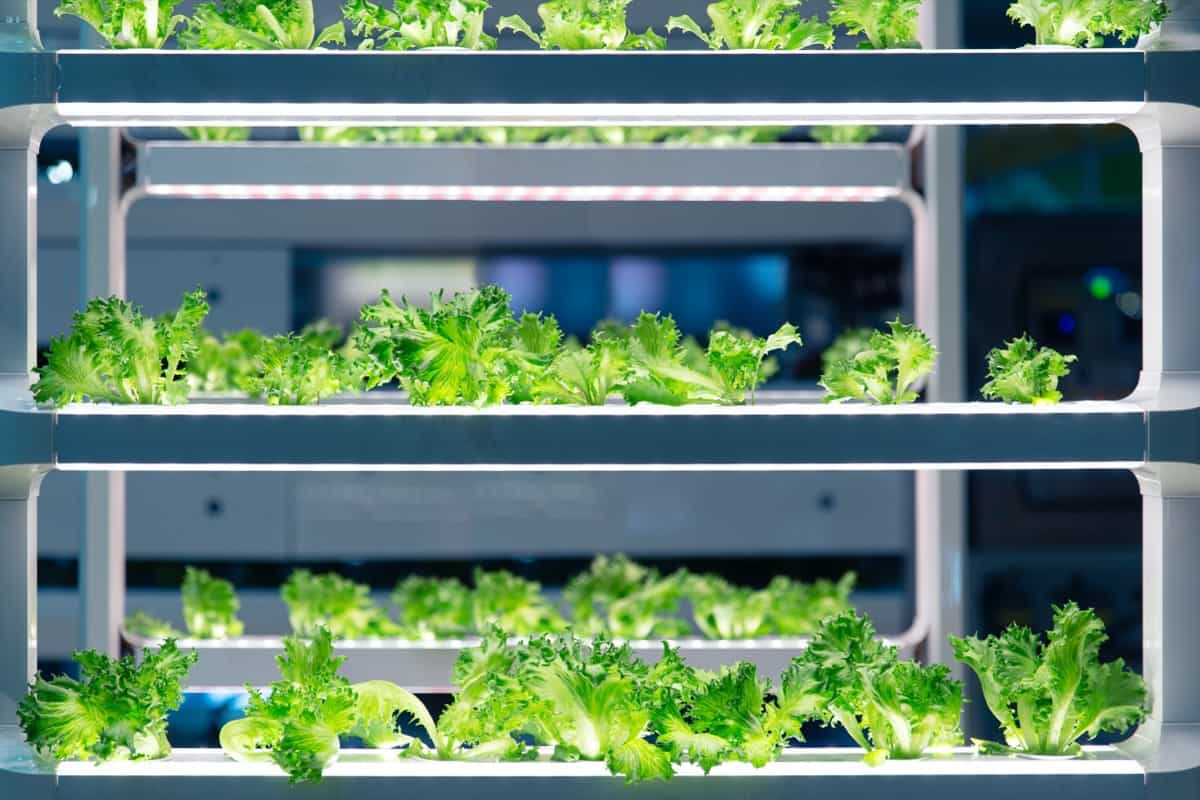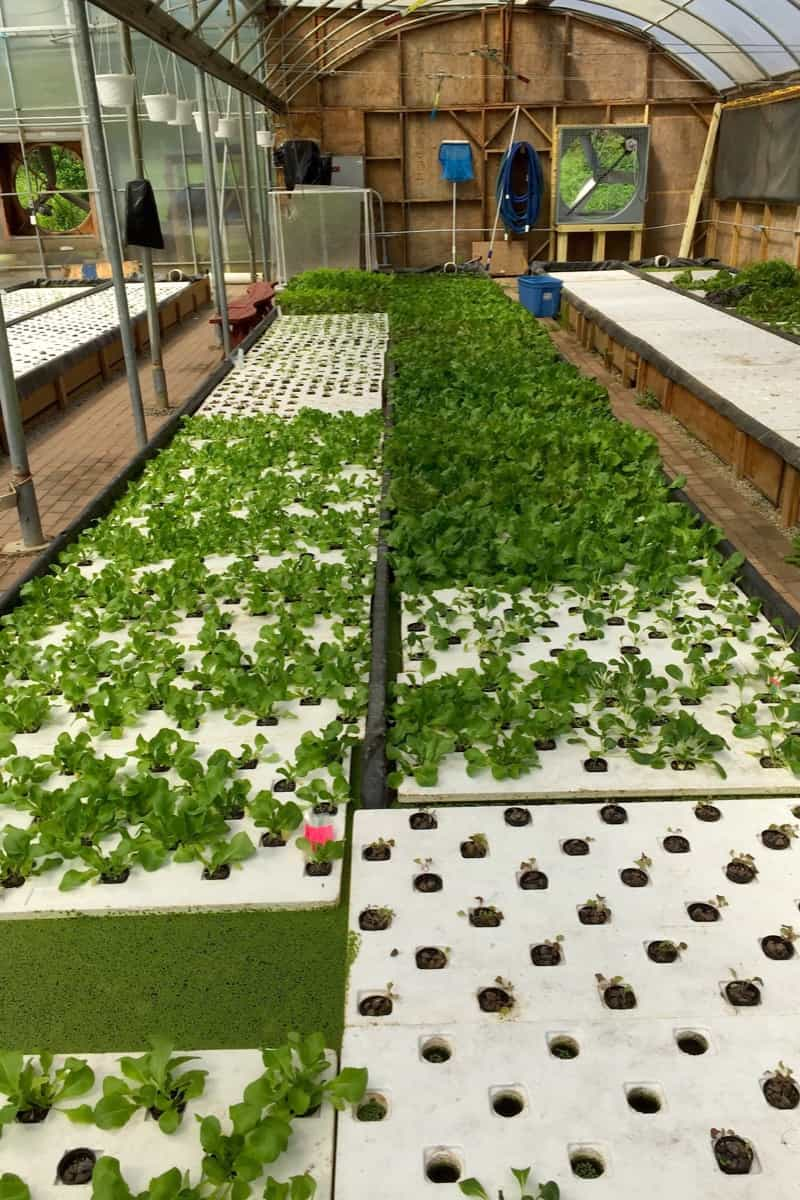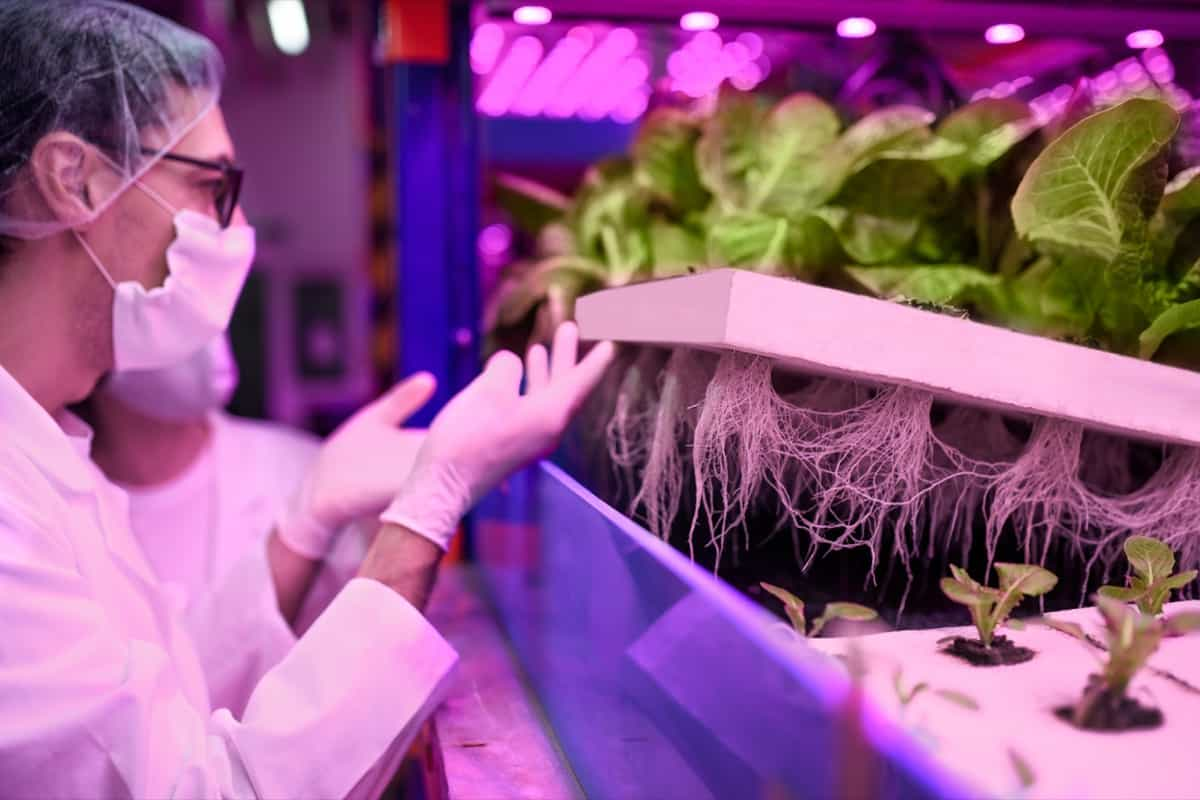Aquaponics combines aquaculture (raising fish) and hydroponics (the soil-less growth of plants) that cultivates fish and plants in one integrated system. While aquaponics is an excellent solution to many issues of sustainability and food production, it is not without its challenges. This article dives into the ten most common issues in aquaponic farming and provides solutions for each.

10 Common Problems With Aquaponic Farming
Ammonia Spikes in Aquaponic Systems and Remedies
One common issue in aquaponics is the unexpected spike in ammonia levels. Ammonia primarily originates from fish waste and uneaten feed, which can seriously threaten fish and plant health if not adequately managed. Excessive ammonia can cause fish to become stressed and diseased, leading to reduced growth and even death. However, there are strategies available to address this challenge.
To control and prevent ammonia spikes, it’s crucial to have a well-established and healthy population of beneficial bacteria that convert ammonia into less harmful substances through the nitrogen cycle. This conversion process is facilitated by the bacteria Nitrosomonas, which convert ammonia into nitrite, and Nitrobacter, which further converts nitrite into nitrate, a nutrient essential for plant growth.
Regulating the amount of fish feed is also vital in preventing excessive ammonia. Overfeeding your fish can lead to waste that decomposes and releases more ammonia into the system. Regularly testing the water for ammonia levels using a quality water testing kit can help maintain a healthy environment for fish and plants.
Nitrate Buildup in Aquaponic Systems and Control Measures
Nitrate buildup is another common problem in aquaponic systems. While nitrates are beneficial for plant growth, excessive levels can be harmful to fish, leading to a condition known as nitrate toxicity. Symptoms include reduced appetite, lethargy, and even death in severe cases.
To manage nitrate levels, ensure an appropriate balance between fish and plants in your aquaponic system. A system with too many fish and insufficient plants will lead to nitrate buildup since the plants cannot absorb the nitrates at the rate they are being produced. Regular water changes are important for small aquaponic systems to control nitrate levels and ensure water safety amidst quick chemical fluctuations. Regular water testing is essential for tracking nitrate levels and making necessary adjustments.
Imbalanced Ph Levels in Aquaponic Setups and Adjustments
Maintaining an appropriate pH level is crucial in aquaponics. Different elements of the system – the fish, the plants, and the beneficial bacteria – each have their preferred pH ranges. Generally, a pH range of 6.8 to 7.2 is considered ideal for most aquaponic systems.
If the pH becomes too high or too low, it can inhibit the growth of plants and bacteria and stress the fish. Regular testing and adjustment of pH levels are therefore essential. Additives like calcium carbonate or potassium hydroxide can be used to increase pH levels, while phosphoric acid can be used to lower pH. It’s important to make adjustments gradually, as sudden changes in pH can stress the fish and harm the bacteria.
Managing Fish Health Issues in Aquaponic Farming
Fish health is a critical aspect of aquaponic farming. Stressed or unhealthy fish can produce lower amounts of waste, which means less available nutrients for plants. Furthermore, diseased fish can spread pathogens throughout the system, potentially infecting the entire fish population.
Prevention is key to effective fish health management. Providing a healthy diet, maintaining optimal water quality, and preventing overcrowding can all help keep fish healthy. However, if the disease does occur, it’s crucial to treat it promptly. Non-chemical treatments are preferred, as many chemicals can harm the beneficial bacteria in the system. Treatments may include adjusting water temperature or using salt baths to treat certain parasites.
In case you missed it: Aquaponics Integration in Greenhouse Farming

Clogging or Blockage in Aquaponic System Filters
Another common problem in aquaponic systems is the clogging or blockage of filters. Over time, solid waste can accumulate and block the filter, impairing its function. This can decrease water quality and affect the system’s overall health.
To prevent this problem, cleaning and maintaining the filters regularly is important. Solid waste should be removed from the system manually or using a mechanical filtration system. If a filter becomes clogged, it should be cleaned or replaced as soon as possible to ensure the system continues to function effectively.
Controlling Algae Growth in Aquaponic Systems
Algae are common in many aquatic environments, including aquaponic systems. While small amounts of algae are generally harmless, excessive algae growth can compete with plants for nutrients and oxygen, potentially leading to reduced plant growth and even fish deaths.
Controlling light exposure is one of the most effective ways to manage algae growth. Algae require light for photosynthesis, so limiting light exposure – particularly in fish tanks – can help prevent excessive growth. Regular cleaning of the system can also help to control algae, as can introducing algae-eating species, such as certain types of snails, into the system.
Nutrient Deficiencies in Aquaponic Plants and Supplements
While aquaponic systems can provide many of the nutrients plants need to grow, they may not provide all. Nutrient deficiencies can lead to poor plant growth and reduced crop yields.
Regular testing of the water can help identify any nutrient deficiencies. Supplemental nutrients can be added to the system if a deficiency is identified. It’s important to ensure that supplements are safe for the fish and the bacteria in the system.
Problems With Fish Feed Conversion and Optimizing Nutrition
The fish in an aquaponic system plays a crucial role in providing plant nutrients. However, not all fish food is converted into nutrients. Some of it passes through the fish and is expelled as waste, while some may remain uneaten and decompose, contributing to water quality issues.
To optimize fish feed conversion, feeding the fish an appropriate amount is important. Overfeeding can lead to waste accumulation and water quality issues, while underfeeding can lead to poor fish growth and reduced nutrient production. The type of feed used also matters. A high-quality, easily digestible feed will result in better feed conversion and more nutrients for the plants.
Dissolved Oxygen Levels in Aquaponic Systems and Maintenance
Dissolved oxygen is critical for both fish and bacteria in an aquaponic system. Fish need oxygen to breathe, while beneficial bacteria require it to break down waste. If oxygen levels fall too low, fish and bacteria may die, leading to a breakdown of the system.
To maintain adequate oxygen levels, it’s essential to ensure that the system is well-aerated. This can be achieved by using air stones or diffusers or by ensuring that the water flow rate is sufficient to mix oxygen into the water. Regularly monitoring dissolved oxygen levels can help detect any issues and make necessary adjustments.
Monitoring and Preventing Fish Diseases in Aquaponics
Lastly, diseases can significantly impact the health of the fish and the overall aquaponic system. Many fish diseases are caused by poor water quality or stress, which can be prevented with proper system management.
Monitoring fish health and behavior is crucial for early disease detection. Changes in behavior, such as decreased appetite or increased lethargy, may be signs of disease. It’s also important to regularly check the fish for any visible signs of disease, such as spots, discoloration, or abnormal swimming patterns.
In case you missed it: How to Start Aquaponics in Greenhouse: A Step-By-Step Guide

Prevention is the best approach when it comes to fish diseases. This involves maintaining optimal water quality, avoiding overcrowding, and providing a balanced diet. Regular water testing can help identify any issues with water quality before they become a problem.
Conclusion
In conclusion, while aquaponic farming can be an efficient and sustainable way to produce food, it’s not without its challenges.
- Feed Your Flock for Less: Top 10 Tips to Save on Chicken Feed
- Ultimate Guide to Ossabaw Island Hog: Breeding, Raising, Diet, and Care
- Hatching Answers: The Top 10 Reasons Your Chickens Aren’t Laying Eggs
- Eggs and Economics: Breaking Down the Cost of Raising Backyard Chickens
- Defend Your Greens: Proven Methods to Keep Iguanas Out of Your Garden
- Ultimate Guide to Cinnamon Queen Chicken: A Comprehensive Guide for Beginners
- Ultimate Guide to California Tan Chicken: Breeding, Raising, Diet, Egg-Production and Care
- Ultimate Guide to Marsh Daisy Chicken: Breeding, Raising, Diet, and Care
- 10 Types of Chicken Farming Businesses You Can Start for Profits